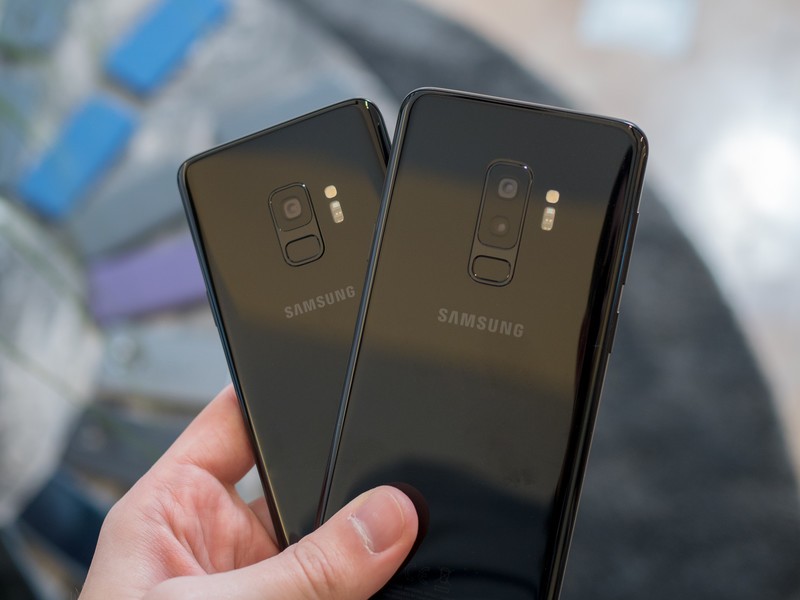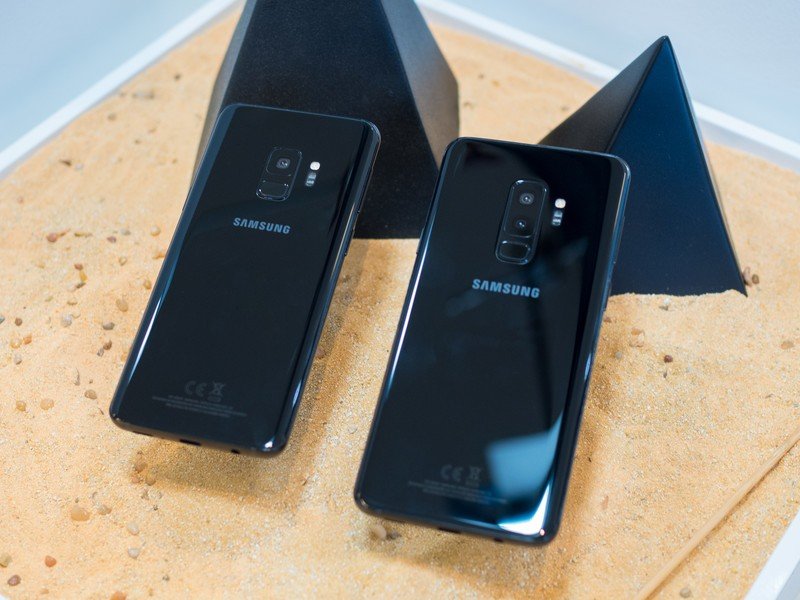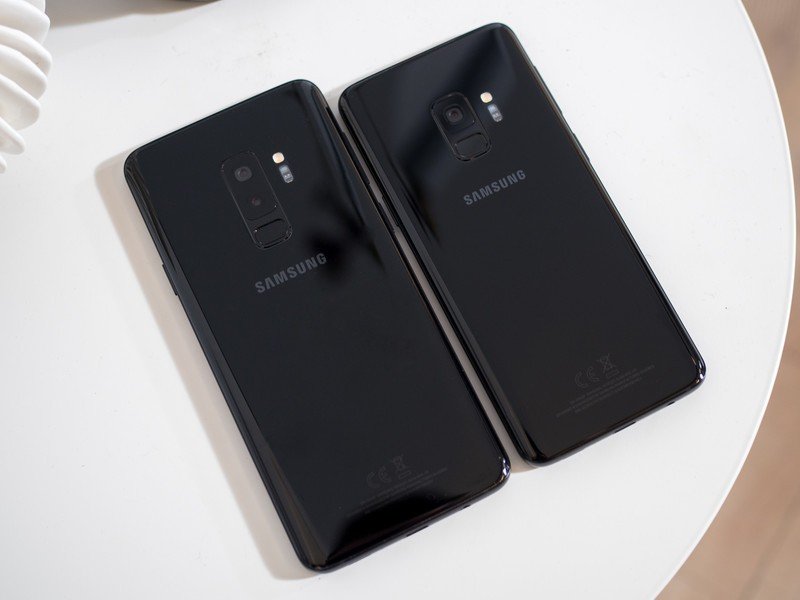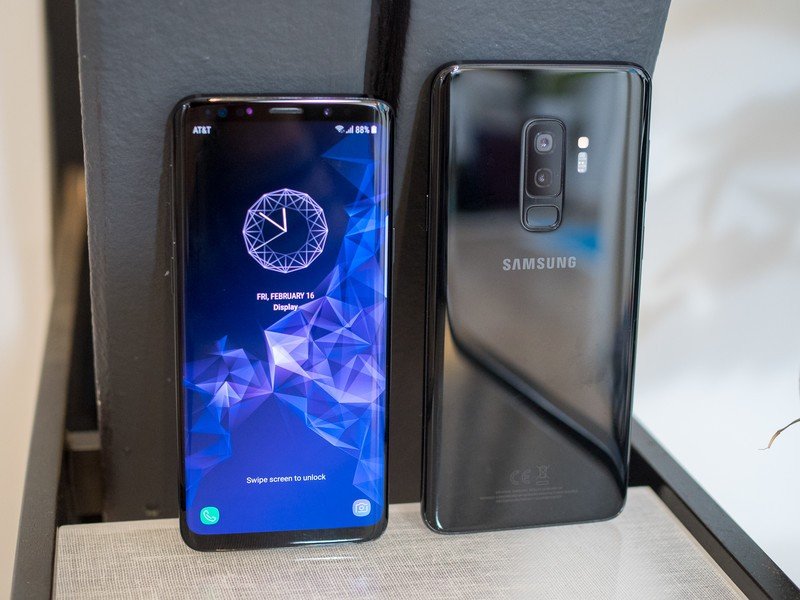Samsung Galaxy S9 vs. Galaxy S9+: Which should you buy?

Samsung's seen serious success with launching its yearly flagship in two sizes. In the last couple of years, the larger version has become the more desirable model while the smaller turned into the solid, default choice at a lower price.
Unlike the Galaxy S8 release, the Galaxy S9 and S9+ have more differences than just size: you get a few feature and spec improvements as well, offering a bit more to justify the higher price.
So when you go to get a new Samsung flagship, you have a choice: should you buy the Galaxy S9 or Galaxy S9+? Here's what you need to know to make the best decision.
What's the same


When it comes to design, Samsung doesn't discriminate between its two flagship sizes. Whether you get the compact Galaxy S9 or larger Galaxy S9+, the materials and proportions are identical. Neither size has an exclusive color or hardware feature. When it comes to the core experience of using the phones, you won't notice a difference beyond the size.
The screens are of course different dimensions, but the resolution and quality of the panel are the same. Yes, that means that the Galaxy S9 has a slightly higher pixel density, but in real-world use you'd never notice the difference — particularly if you leave the phones set at the 1080p resolution they are out of the box.
What's different


The Galaxy S9+'s differences come down to a larger size, two spec changes and a camera addition. The most important ones to consider are about size: moving up to a 6.2-inch display gives you more room to work and play, but also makes the phone larger and relatively tough to manage in one hand. The Galaxy S9+ is about 10 mm taller, 5 mm wider and 15% heavier than the standard Galaxy S9 — that's nothing to sneeze at.
But to go along with that increased size is, of course, a larger battery, which at 3500mAh can help you get through a full day without worrying about charging. The capacity is over 15% higher than the Galaxy S9's 3000mAh, but the larger display certainly doesn't use that much extra power — so you'll be able to do all of the same things for longer on a charge. Battery life hasn't really improved from the last generation, so the Galaxy S9 once again is likely to leave heavy users in need of charging before the day is done.
Get the latest news from Android Central, your trusted companion in the world of Android
The Galaxy S9+ gets a secondary camera, but it may not be a deciding factor in your buying decision.
The primary camera on the Galaxy S9+ is identical to the Galaxy S9, and that's a great thing for everyone because this camera is great. But the larger chassis in the GS9+ afforded Samsung the room to add in a secondary camera that mimics the Galaxy Note 8's. That means it has a longer "telephoto" focal length, roughly twice the length of the main camera. The secondary camera lets you seamlessly zoom in without losing resolution at 2X, and enables Samsung's "Live Focus" portrait mode that artificially blurs the background behind your subject for a dramatic effect.
The secondary sensor isn't the same type of "Super Speed" Dual Pixel that the main camera is, so the quality isn't the same. And as we saw with the Note 8, those extra features of zooming and Live Focus aren't something that completely changes the camera experience. The main camera's improvements in this generation are far more important for daily photography — you just have to decide how much you want the zooming and Live Focus, because you just don't get them on the Galaxy S9.
Samsung Galaxy S9 and S9+ specs
The least consequential addition in the Galaxy S9+ is more RAM, which Samsung bumped up to 6GB to match the Galaxy Note 8. Considering it left the standard Galaxy S9 with 4GB, and the two phones run identical software, it's hard to think that Samsung's done much optimization to take advantage of that extra RAM itself. But the extra memory will, of course, help you hold just a few more applications in the background, and give you more runway into handling future software updates and more powerful apps. This is absolutely a "nice-to-have" and not a necessary feature.
Bottom line: Which should you buy?

As I said from the start, the Galaxy S9 is the default choice for so many people when they walk in the store simply because it's less expensive. If you're unsure about whether you want a "big" phone, start by using the standard Galaxy S9 — you won't regret the size, and it can do almost everything the larger Galaxy S9+ can.
You're going to want to start with the standard S9 and decide whether it's worth spending the extra money on a second camera and larger battery.
But by moving up to the Galaxy S9+, you get a better overall phone. To choose it, you have to know you want a bigger device — maybe you want the extra screen space for everything you do, or need the extra battery life. But you also have to know you can manage the extra size and give up some one-handed usability. If you want to take that trade-off, you then also get the bonuses of more RAM and a secondary camera for extra photography choices — I very clearly put those two additions below the decision regarding screen size and battery capacity, which have clear benefits in everyday use.
Finally, remember the cost involved. To get that bigger screen, larger battery and couple extra features, you have to pay about $120 more for the Galaxy S9+. Over the course of a two-year payment plan, it's about $5 more a month, which is easy for a lot of people to handle — but everyone has their own threshold for how much they'll pay for a new phone, especially when it's just incrementally better. If you can afford it, and your hand can manage the size, the Galaxy S9+ is the better overall phone — and if you can't, the Galaxy S9 gets you most of the way there for less.
Update July 2018: Changes made to reflect our further use of the phones and our opinions of their strengths.

Andrew was an Executive Editor, U.S. at Android Central between 2012 and 2020.

